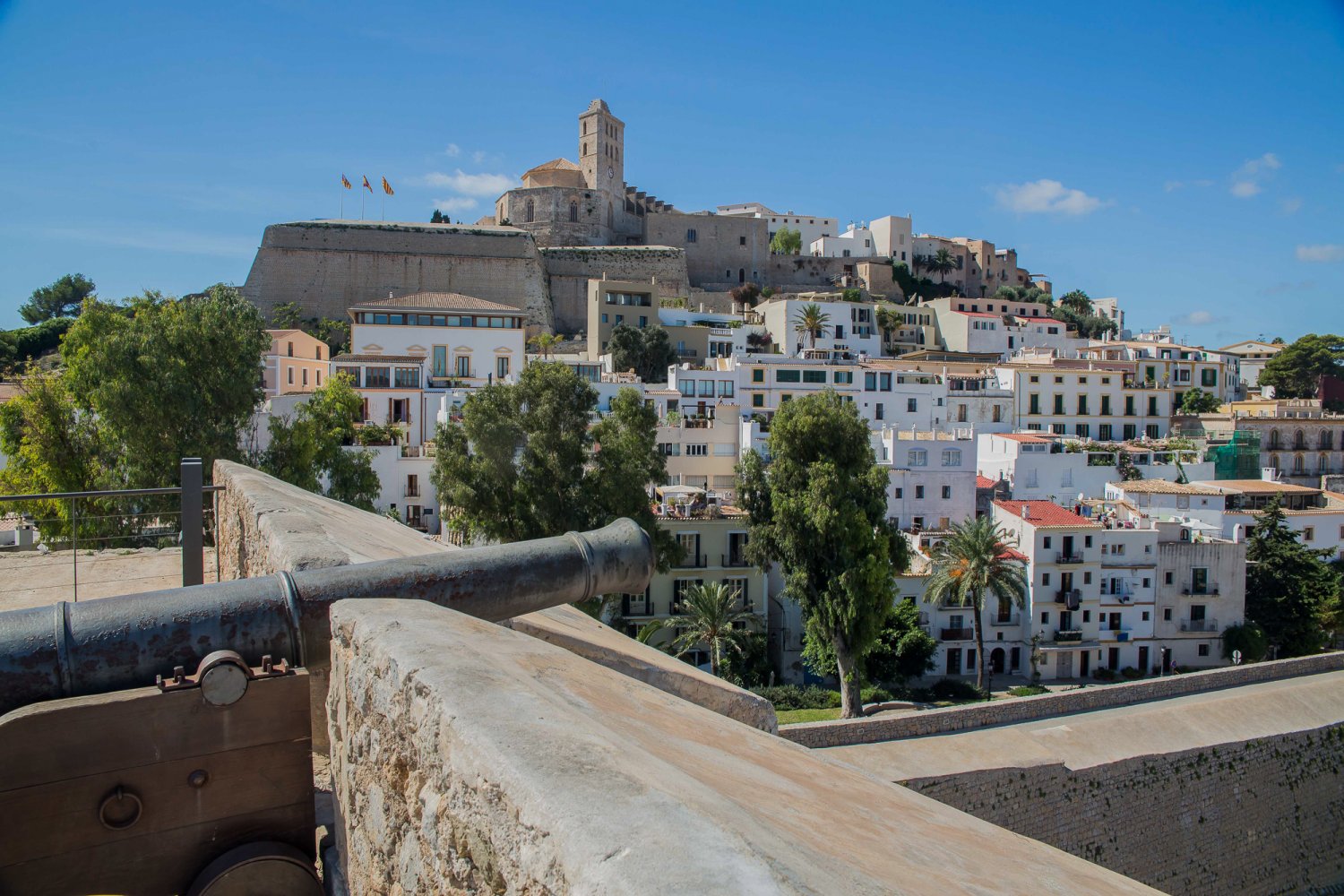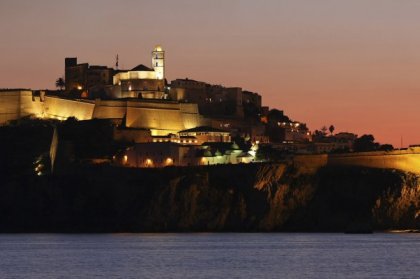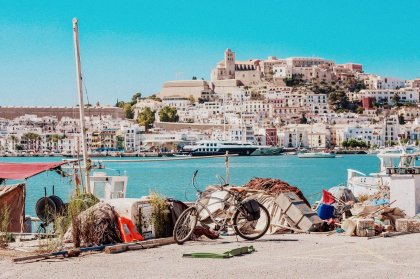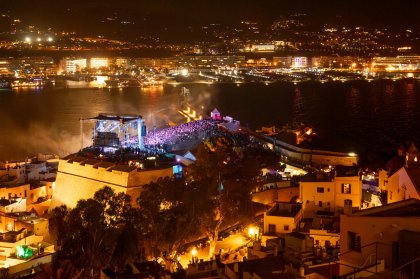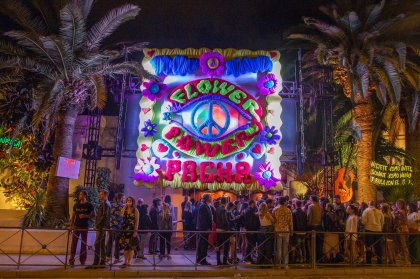Perched on a small mountain next to the sea and overlooking Ibiza town is the fortified old town of Dalt Vila which translates to "Upper Town".
City walls, squares and narrow lanes
Originally called Ibosim and founded by the Phoenicians, Dalt Vila has been added to by successive occupiers and was once one of the most important coastal cities in the Mediterranean. The last addition was the Renaissance defensive walls that surround it, which Kings Charles I and Philip II of Spain had constructed to defend against the French and the Ottomans.
There are surprises and amazing photo opportunities everywhere; this vast melting pot of history, ancient buildings and walls defy you to not find something of interest. You're better off on foot, in sensible shoes, exploring the narrow, winding, steep cobbled streets and magnificent views from the breaks in the high ramparts and the vast terraces at each level.
Routes and tours
There are three official routes around Dalt Vila, though you can just wander around, get lost and surprise yourself at what you find.
The tourist office in Vara de Rey gives out free guides to navigate the warren of streets and there are information plaques sprouting up from the ground all over; these give you, in multiple languages, a chance to learn and do your own guided tour at your leisure, amidst the residents hanging out their washing from their balconies.
A nice way to discover the hidden treasures of the old town are also these free guided tours and the tours including a workshop - the experienced guides will stimulate your imagination with many anecdotes and interesting facts.
City gates
The summit affords you some magnificent views, as do the breaks in the high ramparts and the vast terraces at each level as you journey on up. The dramatic main entrance gateway is up a slope, traversing a stone drawbridge through the Portal de Ses Taules entering into an ancient cobbled stone courtyard.
Entering the gateway you will walk directly onto the Plaza de Vila, or main square, where you will find many restaurants, art galleries and shops with hand-crafted goods. Continue left on Calle Sa Carrosa and you will get to the Bastion of Santa Lucia. On the way there, you'll see a seated bronze statue of Ibizan priest and historian Isidor Macabich, the first person to study the island's past in great depth and after whom many streets in Ibiza are named.
The other entrance, Portal Nou (reached from behind Plaza del Parque) has a more gradual ascent, which also leads to the world-class Contemporary Art Museum where two floors down, you'll be able to see the remains of an ancient Phoenician home. The Phoenicians were the ones that founded what came to be an impenetrable fortress city trading in salt, silver and gold ingots and delicacies of the day like dried, salted fish.
The Patron Saint San Ciriaco
The Catalans were the first to penetrate Dalt Vila from within and by doing so, crushed Moorish rule. As legend has it, the brother of the Emir that controlled Ibiza was deeply jealous of his sibling and had betrayed him to the Catalan pretenders. He told them the whereabouts of a secret tunnel that came out at a small chapel, which afterwards was named in honour of San Ciriaco, the Patron Saint of Ibiza.
The exit of the tunnel can be seen behind bars in the cobbled lane of Carrer Mayor leading up to the cathedral. Each year on 8 August, the Saint is celebrated with a giant firework display to signify the defeat of the Moors.
Restaurants
Candlelit dinners in a medieval castle under the Mediterranean stars - can you imagine anything more romantic? There is a wide choice of restaurants found in Dalt Vila. The terrace of La Plaza restaurant on the Plaza de Vila is perfect for a romantic dinner. Walking further up you arrive at the square Plaza del Sol offering panoramic views, as well as the small bar and restaurant S'Escalinata, where you sit on thick cushions on the cobbled stairs.
The cathedral
Looking down from the battlements by the Cathedral of Nuestra Señora de las Nieves, there are some wonderful panoramic views over the city, the harbour and the sea stretching out as far as sister island, Formentera. Look down on the red tiled domes of the 16th Century church of Santo Domingo, and from here you can also spot the statue of General Joaquín Vara de Rey, the Ibizan hero of the Cuban War, standing proudly at the centre of the boulevard that bears his name.
In the square in front of the cathedral is the Archaeological Museum with many collections from the Phoenician and Carthaginian era with artefacts from the necropolis of Puig des Molins, where its sister museum is located. Ibiza is home to one of the world's best preserved collections of Phoenician relics taken from the necropolis and these can be seen in both museums.
Hidden treasures
A room which contained an exit to the outside of the old castle in Ibiza Town was discovered in 2002, full of pottery, armaments and other objects used in everyday life in Ibiza from Phoenician times right up to the 13th Century.
This room connected two towers of the castle during the Arab occupation of the island and would be used as a way for the population to retreat into the castle in times of attack. As a way of stopping the attackers following them, it was the custom to fill the room with earth to securely block the entrance from the outside.
It is thought that when invading knights overran the castle from mainland Spain, this room remained buried full of earth and was forgotten about until it was discovered. This is the reason why all the objects that have been found are in such a good state and have given archaeologists great insight into life in Ibiza at this time.
Party in medieval surroundings
Once a year, at the beginning of the summer season, a very special party happens on the battlement of Santa Lucía, the Grand Finale of the IMS, the International Music Summit. While the sun sets, international DJs play on a huge open-air stage, where you can dance with stunning views of the whole town, harbour and sea.

